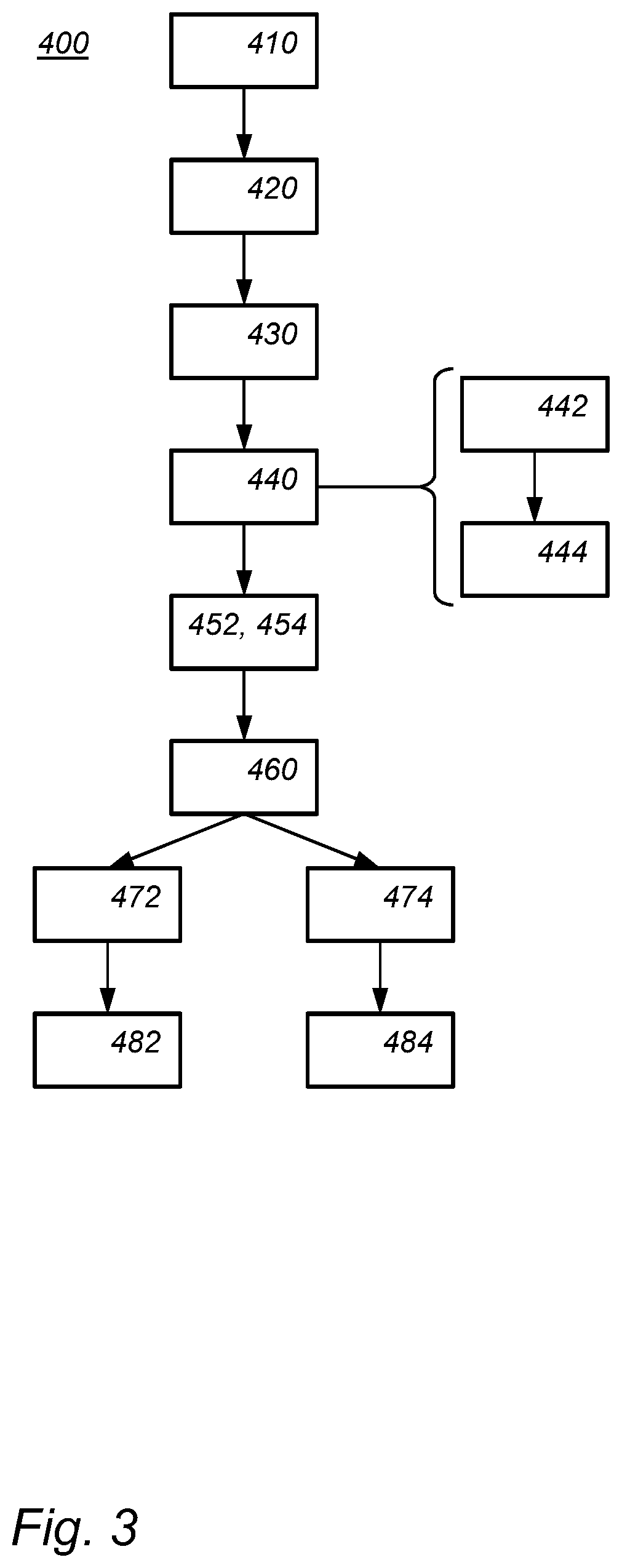Key exchange devices and methods
a key exchange and key agreement technology, applied in the field of network nodes, a key agreement method and, can solve the problems of kem schemes not being able to achieve forward-secrecy and less suitable key agreement protocols for low-resource devices
- Summary
- Abstract
- Description
- Claims
- Application Information
AI Technical Summary
Benefits of technology
Problems solved by technology
Method used
Image
Examples
case i
[0169 may be chosen for medium security, e.g., for classic security. Cases II and II may be chosen for post-quantum security. Case III is more secure than case II.
[0170]Communication Complexity:
[0171]Due to the use of rounding to a lower modulus, we are able to reduce the size of each entry of a public-key and raw key, achieving significantly lower bandwidth requirements. We quantify this in the two following tables, where we demonstrate the bandwidth requirements of our proposed scheme (with and without the use of rounding, respectively). Embodiments are compared to the LWE based protocol described in “Frodo: Take off the ring! Practical, Quantum-Secure Key Exchange from LWE”, by J. Bos, C. Costello, L. Ducas, I. Mironov, M. Naehrig, V. Nikolaenko, A. Raghunathan, D. Stebila.
[0172]The bandwidth is calculated as the total size of key-exchange messages exchanged (i.e., public-keys and reconciliation data) and does not include the exchange of the public matrix A.
[0173]
TABLE 3Communica...
PUM
 Login to View More
Login to View More Abstract
Description
Claims
Application Information
 Login to View More
Login to View More - R&D
- Intellectual Property
- Life Sciences
- Materials
- Tech Scout
- Unparalleled Data Quality
- Higher Quality Content
- 60% Fewer Hallucinations
Browse by: Latest US Patents, China's latest patents, Technical Efficacy Thesaurus, Application Domain, Technology Topic, Popular Technical Reports.
© 2025 PatSnap. All rights reserved.Legal|Privacy policy|Modern Slavery Act Transparency Statement|Sitemap|About US| Contact US: help@patsnap.com



